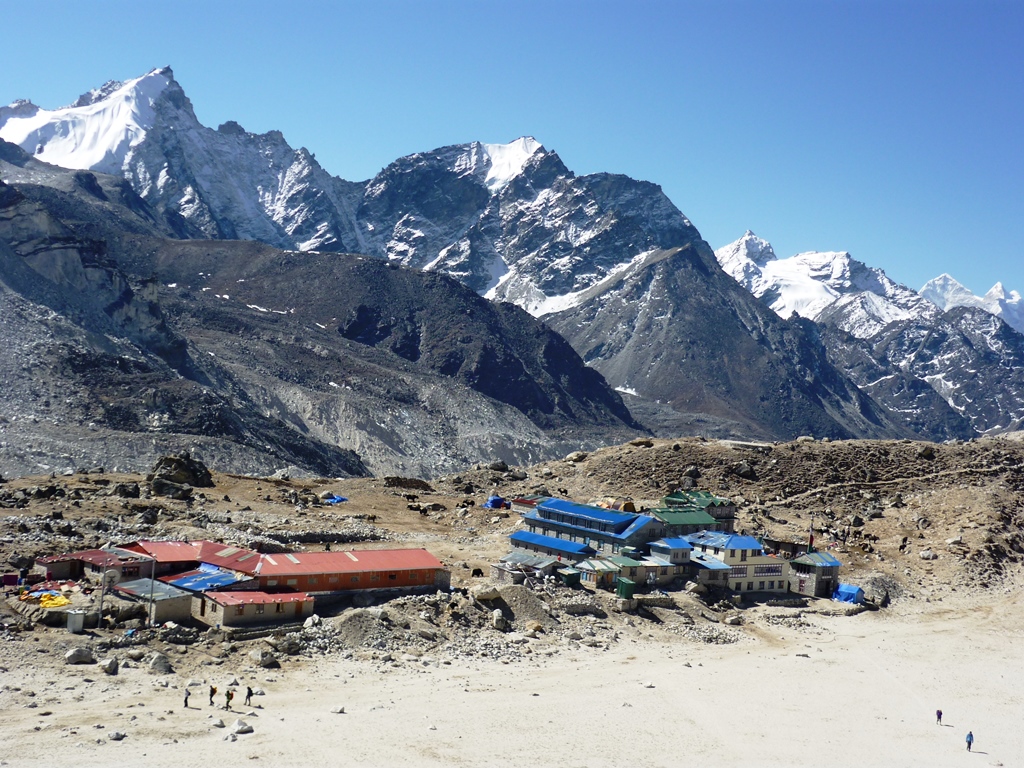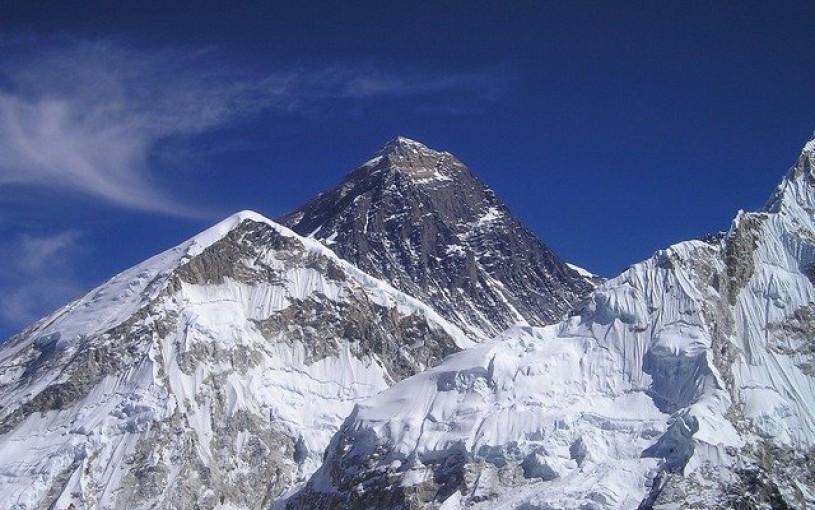Why Everest Base Camp Trek Without Lukla Flight is the Best Experience
Everest Base Camp trek without Lukla flight is a bucket-list adventure for many trekkers around the world. While most trekkers opt for a flight to Lukla to begin their journey, we offer a 17-day Everest Base Camp Trek that starts by walking from Lower Solukhumbu, allowing you to immerse yourself in the beauty, culture, and tranquility of the region. Here’s why skipping the Lukla flight and trekking from the lower altitudes is the best way to experience Everest Base Camp.
1. Start Your Journey with a Sense of History and Culture
At Everest Base Camp trek without Lukla flight you start trek by walking from Lower Solukhumbu, you’re retracing the steps of the original pioneers of Everest expeditions. Before Lukla’s airport was built, every adventurer who dreamed of standing at the foot of Mount Everest had to start from Jiri or Salleri. This route is steeped in history, allowing you to follow the paths taken by Sir Edmund Hillary and Tenzing Norgay Sherpa, adding a deep sense of tradition and culture to your trek.
Immerse in the Sherpa Culture Early On
As you trek through Lower Solukhumbu, you’ll encounter authentic Sherpa villages, Buddhist monasteries, and vibrant local markets, giving you the chance to explore the rich cultural heritage of the region from the outset. This cultural experience is something you’d miss if you flew directly to Lukla. You’ll gain a deeper appreciation of Sherpa customs, traditions, and hospitality, which are an integral part of the Everest Base Camp trek experience.
2. Gentle Acclimatization for a Smoother Trek
One of the main benefits of starting your trek from the lower region is the gradual acclimatization. The ascent from Lower Solukhumbu allows your body to adapt to the increasing altitude at a slower, more comfortable pace. This reduces the risk of Acute Mountain Sickness (AMS), making the trek less physically demanding compared to the quick altitude jump when flying to Lukla. With more gradual elevation gain, you’ll enjoy the trek more and feel less pressure to acclimatize.
3. Explore Untouched Natural Beauty
The lower Solukhumbu region offers scenic beauty that is often overlooked by trekkers flying into Lukla. By starting your trek on foot, you will journey through lush green hills, terraced farmlands, and pristine forests filled with rhododendron and pine trees. The diversity in landscape is astounding – you start in the subtropical valleys and slowly make your way to the alpine zone, experiencing Nepal’s incredible biodiversity.
4. Escape the Crowds

The Lukla flight is the fastest way to reach Everest Base Camp, but it also means you’ll be trekking alongside many other groups. Starting from the lower region means you’ll enjoy less crowded trails, providing a more peaceful and authentic trekking experience. You’ll have the opportunity to interact more deeply with local communities and enjoy the serenity of nature without the hustle and bustle often seen on the Lukla-EBC route.
5. Build a Deeper Connection to the Mountains
Walking to Everest Base Camp from the Lower Solukhumbu gives you a profound connection to the landscape. The slower journey allows you to absorb the breathtaking vistas at every step, creating a richer sense of adventure. You’ll see the towering peaks emerge gradually, feel the dramatic change in temperature, and experience the shift from verdant valleys to rugged, high-altitude terrain. This deeper physical and emotional connection is something that simply cannot be replicated when flying to Lukla.
6. Extended Time to Explore Hidden Gems
Our 17-day itinerary ensures you have ample time to explore the hidden gems along the way that most trekkers miss. Whether it’s a tranquil village, an ancient monastery, or a secluded viewpoint, you’ll have time to stop, interact, and truly appreciate the local landmarks. The extended trek also allows you to spend more time in key locations like Namche Bazaar, Tengboche Monastery, and the Khumbu Glacier.
Sample 17-Day Itinerary:
- Day 1-2: Arrive in Kathmandu, transfer to Phaplu or Salleri to begin the trek
- Day 3-7: Trek through Lower Solukhumbu, passing through villages like Kharikhola and Bupsa, heading towards Lukla
- Day 8-10: Reach Namche Bazaar, a bustling Sherpa town, and acclimatize with side hikes
- Day 11-14: Trek from Tengboche to Dingboche and Lobuche, visiting monasteries and soaking in Himalayan views
- Day 15-16: Arrive at Everest Base Camp and Kalapatthar for stunning sunrise views over Everest
- Day 17: Return to Lukla for your flight back to Kathmandu
7. Environmentally Friendly and More Ethical
Flying to Lukla has a significant environmental impact due to carbon emissions. By opting for the walk from Lower Solukhumbu, you’re making a more sustainable choice. The extended trekking route also provides more employment opportunities to local porters, guides, and teahouses along the way, benefiting the communities who have preserved this route for centuries.
8. Sense of Accomplishment and Fulfillment
Trekking the full distance to Everest Base Camp without taking the flight to Lukla adds an extra layer of achievement to your journey. The physical and mental stamina required to walk the entire way to Everest Base Camp creates a greater sense of accomplishment. By the time you reach base camp, you will have truly earned the stunning panoramic views and the memories of a lifetime.
Conclusion: A Journey Like No Other
The Everest Base Camp trek without Lukla flight offers a richer, more immersive experience for trekkers who want to connect deeply with the landscape, people, and culture of the Khumbu region. With a 17-day itinerary, you have the time to enjoy the natural beauty, gently acclimatize, and soak in the authentic Sherpa lifestyle. If you seek a rewarding, slow-paced adventure with unmatched scenery, fewer crowds, and a profound connection to the highest peaks on Earth, this is the trek for you.
Chronic Flight Delays and Helicopter Crashes at Lukla: Why You Should Consider Everest Base Camp trek without Lukla flight
Lukla, often dubbed the “world’s most dangerous airport,” is infamous for its challenging flight conditions. Frequent flight delays and cancellations are common due to unpredictable weather patterns in the Everest region. High winds, poor visibility, and sudden cloud formations often lead to hours-long delays or even cancellations, disrupting trekking schedules. Travelers often find themselves stuck in Lukla for days, either waiting for a flight or, in some cases, opting for an expensive helicopter ride.
Even more concerning is the history of helicopter crashes in the area. With the mountainous terrain and sudden shifts in weather, helicopter rescues and flights have become risky. Over the years, there have been several incidents of helicopters and small planes crashing during attempts to land or take off from Lukla. The combination of high altitude, narrow runway, and ever-changing weather makes flying in this region perilous, especially during peak trekking seasons when the demand for flights is high.
Given the unpredictability and safety risks associated with flying to Lukla, starting your Everest Base Camp trek from Lower Solukhumbu offers a safer, more enjoyable alternative. Not only do you avoid the nerve-wracking flight experience, but you also benefit from a gradual acclimatization process, scenic landscapes, and a deeper cultural immersion. Walking from the lower region allows you to appreciate the full beauty of the Khumbu Valley while avoiding the stress and potential hazards of Lukla’s flight issues. So it is best decision to have Everest Base Camp trek without Lukla flight.
At Red Reach Himalaya, we don’t just sell treks; we curate unforgettable holiday experiences. Our mission is to provide you and your clients with adventures that will be cherished for a lifetime. Whether it’s an exhilarating trek, a challenging climb, an exploration of heritage sites, a cultural immersion, wildlife encounters, or simple tours and activities, we dedicate our hearts to every detail.
We are committed to showcasing the unique beauty and experiences our region has to offer. Discover what our clients have to say about our exceptional services by reading their reviews on Google page.











